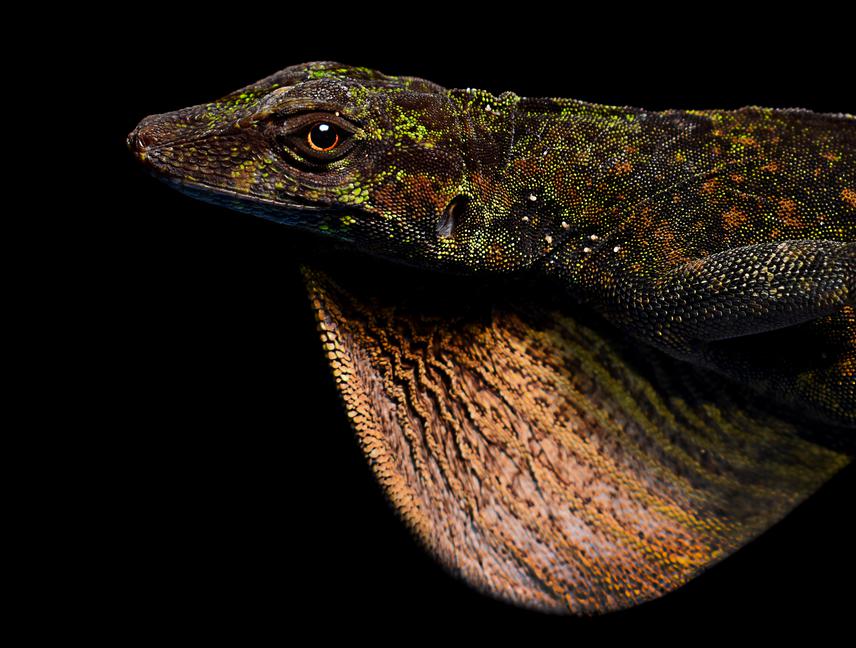Sofía Alfonso
The Pance River basin, situated in the ecologically significant region of the southern Colombian Andes, possesses substantial conservation potential. However, anthropogenic pressures over several decades have jeopardized its unique biodiversity. In response, the Farallones Foundation has actively pursued ecological restoration for over 40 years, leading to the establishment of the Bachué Nature Reserve. Building upon these remarkable achievements in fostering secondary Andean and sub-Andean forests, a crucial next step towards effective conservation is the comprehensive assessment of flora and fauna species in the area. Thus, our project aims to conduct a thorough investigation of the middle and upper Pance River basin's biodiversity, with a focus on six key biological groups known to harbor keystone, endemic, threatened, and bioindicator species.

A male good anole (Anolis eulaemus) exhibiting its dewlap. The dewlap, consisting of thin calcified cartilages covered by a flexible skin fold. © Sofía M. Alfonso-Velasco.
Through expeditions and diverse sampling techniques, the project seeks to gather comprehensive data on birds, mammals, reptiles, amphibians, butterflies, and orchids within the upper Pance River basin. It will also conduct a local perception survey of fauna and flora, capturing community input before and after sharing the expedition results. The project will generate species lists, technical reports, scientific publications, and informative materials to disseminate crucial information about the region's species. Moreover, educational workshops on wildlife monitoring will be organized for the community, led by young researchers actively participating in the project.
By establishing an updated baseline for these biological groups and highlighting areas of special importance and potential threats, the project will serve as a foundation for several key objectives. Firstly, it will facilitate the regulation of activities within the area, ensuring the conservation needs of the present species are considered. Secondly, it will contribute to further research and deepen our understanding of the ecology of these organisms, enabling the implementation of more effective conservation strategies. Lastly, the project aims to foster community engagement and instill a sense of ownership among residents, nurturing awareness and promoting stewardship of the basin's biodiversity.
Header: Tropical snail-eater (Dipsas sanctijoannis), a non-venomous arboreal snake endemic to Colombia. This nocturnal species thrives in forested regions, particularly lower elevation and montane wet forests. © Sofía M. Alfonso-Velasco.